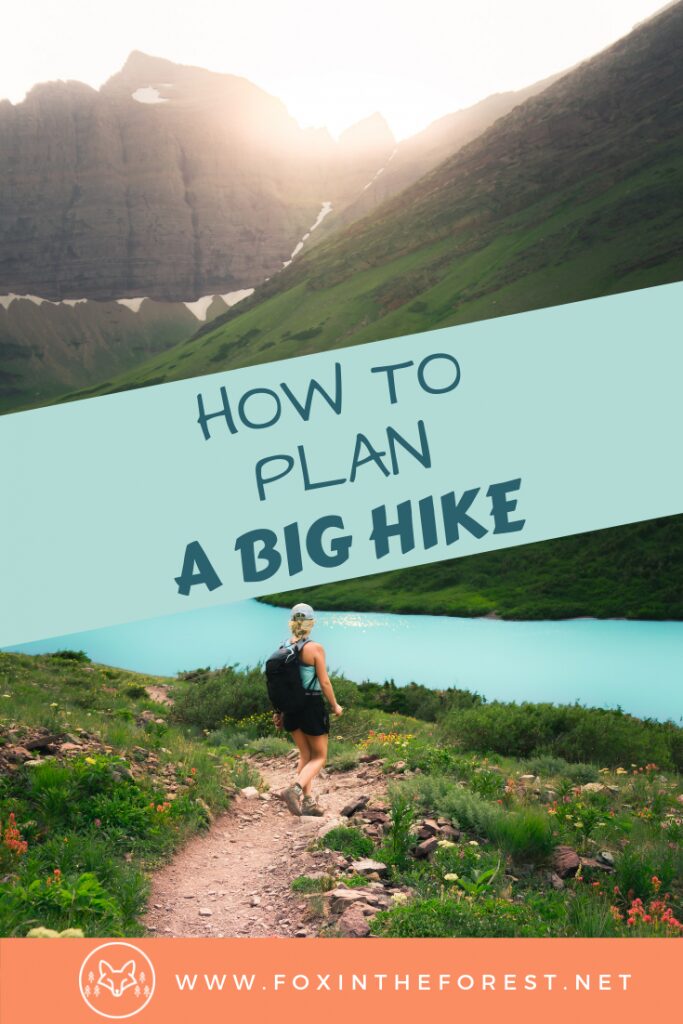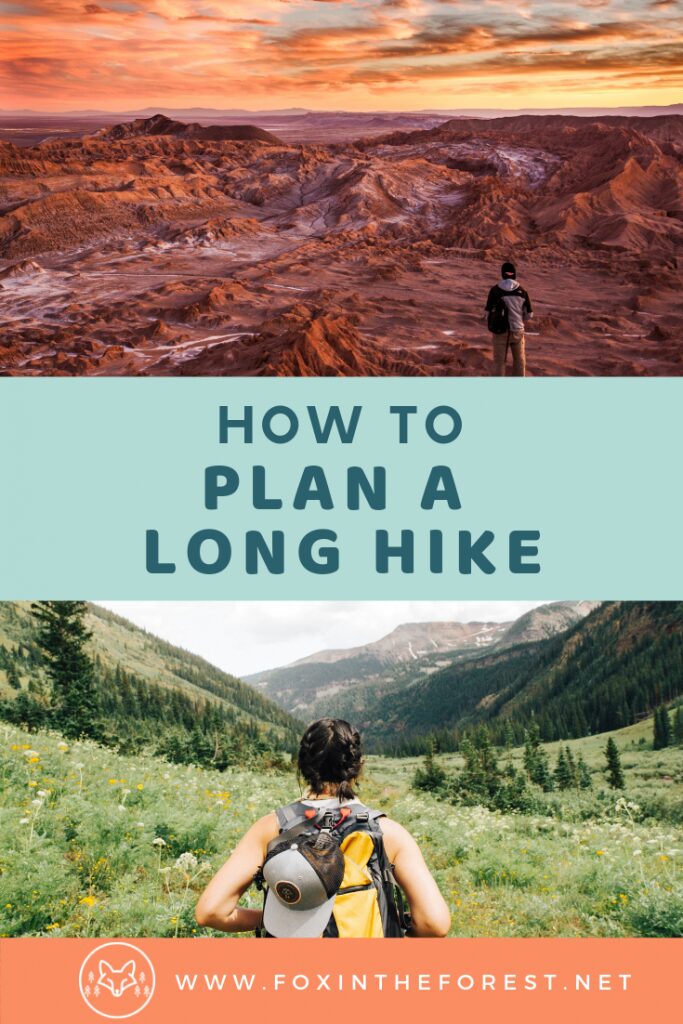Last Updated on March 27, 2024 by foxintheforest
Perhaps you’re headed off on your first solo backpacking trip. Or maybe you’re looking to understand a bit more about how to find hiking trails. Either way, there’s plenty to think about and sometimes it’s tough to just get started. Planning a big hike or backpacking trip can easily feel overwhelming. However, with a few simple steps, you’ll be ready to rock your next big hiking adventure. This step-by-step guide will keep you organized for your next adventure.
How to Find Hiking and Backpacking Trails
There are countless resources when it comes to finding hiking and backpacking trails. From blogs (shameless self-promotion) to apps there’s a wide range of resources available to you. Here’s a look at some of my favorite resources and why they continue to provide me with inspiration.
- Blogs. Blogs offer an awesome insight into the feel of an area. Most of the time blogs are going to give you the “best of” or more popular hiking trails to explore in an area. They are great if you are new to hiking, new to a particular area or you like to pick the most Insta-worthy hikes. I use blogs as a reference when I want to explore a new area
- AllTrails.com. It’s an app, it’s a website, and it’s the best hiking resource out there. All of my off-the-beaten-path adventures have started by using AllTrails. I’ve been using the free account for years and never felt the need to upgrade.
- National Forest and National Park websites. These resources will give you information on overnight or day-use permits and (depending on the park or forest) difficulty level. I’ll cross reference this with the information I find on AllTrails.
- Social Media. Social channels like Instagram are useful for finding out what an area looks like. The new Leave No Trace principals dictate that you should think twice before geotagging a specific trail or location. However, I use social media when I’m looking to get a feel for a faraway place and see if it’s worth my time to explore.
- Good old-fashioned USGS maps. Knowing how to read a map is an essential skill for a hiker. When it comes to planning a hike or backpacking route, looking at USGS maps give you a lot of valuable information such as the terrain, potential camping places, and mileage. You can look up USGS maps with a GPS app, or view them online for free with HillMap. You can also go into an outdoor store and purchase specific maps you’ll want for your journey.
Speaking of hiking blogs, I’ve got a wealth of destination-based resources to help plan your next hike
- The mega-list of amazing day hikes near Denver
- Colorado’s best 14ers for any ability
- 6 amazing Colorado mountain climbs near Denver
- Canyon hikes in southern Utah that you didn’t know existed
- Incredible fall hikes in Colorado
- Hiking and exploring Vedauwoo, Wyoming
- How to explore Bryce Canyon National Park in just one day
- Your guide to the best views and hikes in the Grand Canyon
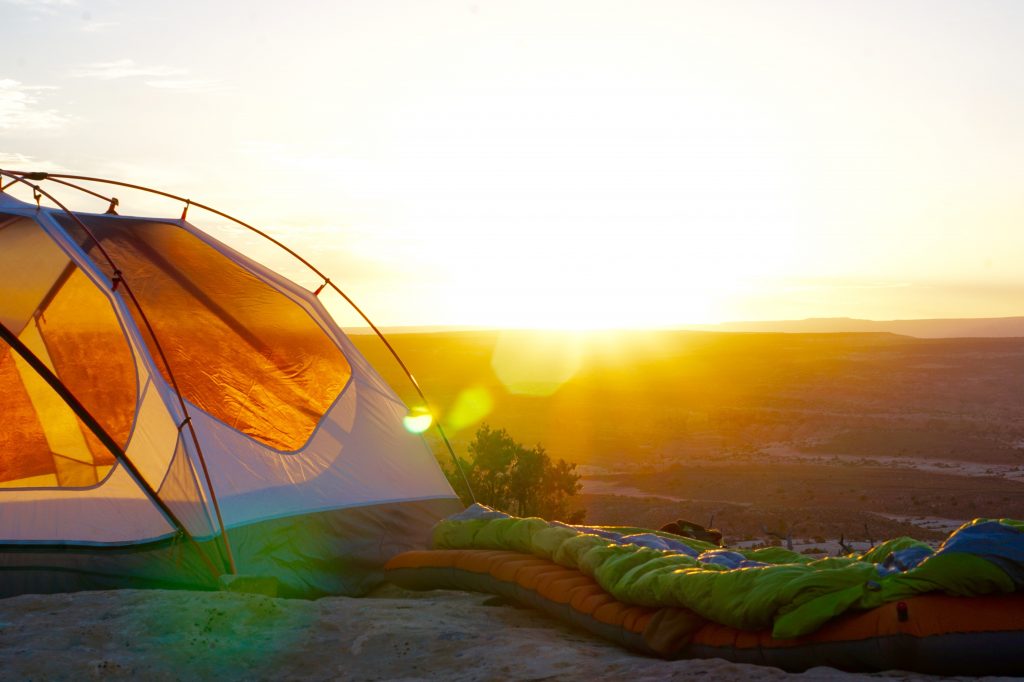
Set Realistic Expectations When You Plan a Hike or Backpacking Adventure
When you are planning a big hike or backpacking trip it is important to first understand your abilities and the abilities of those traveling with you. I know safety can sound lame, but if you stay honest with what you want to tackle, you’ll have a much better time. Ask yourself what you want out of the trip. Are you looking for long-mile slogs? Or do you want to have a good challenge with some friends? Perhaps you’re new to hiking or backpacking and you’re interested in planning a more ambitious adventure.
With your goals in mind, find a hiking trail that gives you the mileage, elevation gain, and difficulty you are looking for. Remember, people move on average about two miles an hour or 1,000 vertical feet an hour, so keep your hiking plans realistic. The last thing you want is a full-blown sufferfest when you are just looking for some relaxing trail time. Use maps to cross-reference your plan so you can see if there are still ample places to rest and camp.
Planning Where to Camp
We won’t dive too deep into how to find camping on a backpacking trip (I cover this topic in my guide to planning a backpacking or wilderness camping trip). However, if you are looking to camp along the trail during your hike, you’ll want to make sure this is actually possible. Google your trail with the words “trip report” or “recent conditions” to see what others have done. Double check with the wilderness area you will be in and make sure that overnight parking is allowed at the trailhead and you don’t need any permits (if you do, snag them).
Looking for some backpacking inspiration? Here are some resources I put together.
- The most scenic weekend backpacking trip in Colorado
- Backpacking with your dog
- Stories from the Colorado Trail
- Fun weekend backpacking trips near Denver
Create a Packing List
I’ll be the first to admit it, I’m totally lost without a list. I have lists everywhere in my life. For groceries, weekly planning, easy weekend getaways, the works! Create a packing list for your big hike. Lists are especially handy if you’re traveling with a group. I’ll throw together a quick Google Doc for any big group activities and include a packing list. Have people volunteer to bring group gear such as a stove, first aid kit, water filter, and shelter. Feel free to include individual items too, so everyone is well organized and prepared as you plan your hike.
Keeping Safe While on a Hike or Backpacking Trip
I have an entire e-book dedicated to everything you need to know to rock your first big backpacking trip, as well as several resources for staying safe on a solo hike and more. The one big piece of information that you’ll find throughout safety, is writing up a trip plan for your hike or wilderness camping adventure. This digital document is a life-saver in case of an emergency. I can’t give you a promise that every adventure will run without a hitch, but I can tell you that having a trip plan will help search and rescue teams locate you quicker and keep you more organized in case something were to happen out on the trail.
What Is a Trip Plan?
A trip plan is an essential safety tool for anyone embarking on a trip outside. It’s a planning tool that mountaineers, backcountry skiers and snowboarders, and guides use to organize, plan, and execute their adventures. How complicated your trip plan needs to depend on several factors.
- Are you doing something new or dangerous? If it’s a simple day out hiking, you might not need a full-blown trip plan, but you certainly need to inform someone on where you are going, what you’re wearing and driving, and when you plan on returning.
- Are you traveling off-trail? Going solo? Any off-trail or solo adventure should be taken seriously and a trip plan should be left with someone you trust.
- Are you traveling with a big group? If so a trip plan is an extremely useful tool for tracking group gear, meeting points, and any special needs within the group.
- Will you be gone for multiple days? Consider a trip plan that takes into account where you plan on sleeping, what you’ll be doing, and when you plan on getting back.
Consider creating a trip plan template for your trips. A template makes it easy to have your trip plan ready in a jiffy.
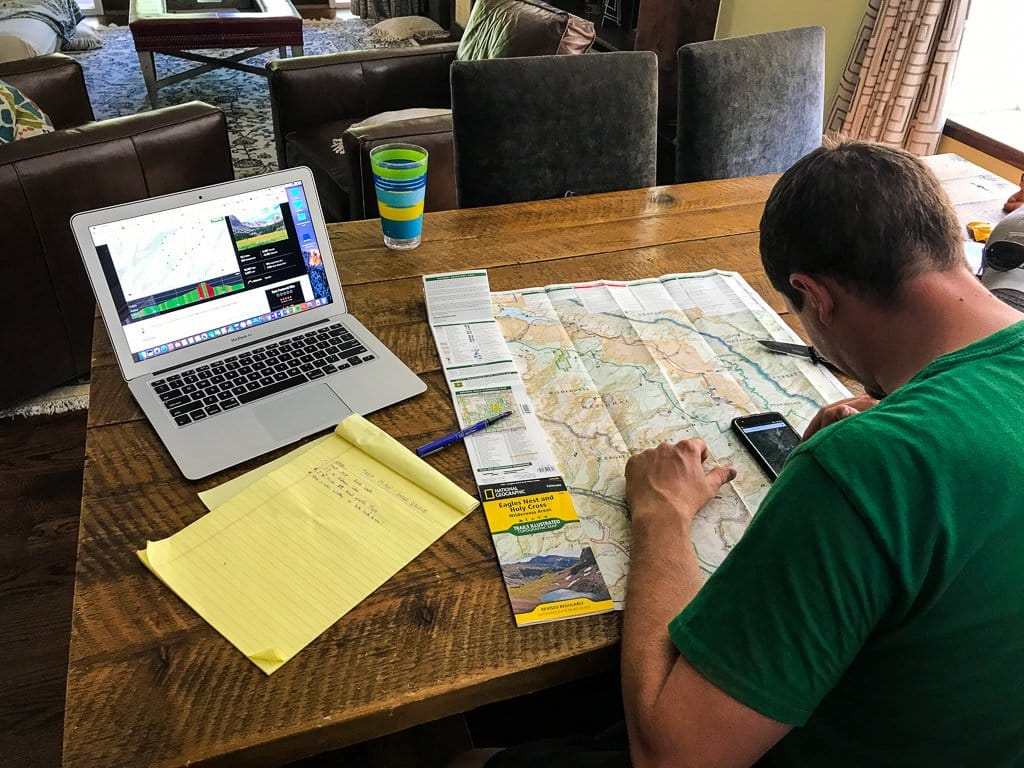
Things to Include in Your Trip Plan: Who, What, When, and Where
Depending on activity and group size, your trip plan may be long or short. When you’ve got a group, use something like Google Docs to create a trip plan that can easily be shared and edited between the group.
Where are You Going?
Trip plans contain a detailed description of where you will be. Include key pieces of information such as what trailhead you’ll be parking at as well as a description of the vehicle you’ll be driving. That way, if something happens, search and rescue can start by locating your vehicle.
For riskier sports like climbing, mountaineering, bushwhacking, hunting or backcountry touring be sure to include a digital map of your route. Use a tool like Hillmap if you are traveling along a non-standard trail, or include a link using AllTrails. Most search and rescue personnel (SAR) encourage you to have a GPX file of your route. A GPX file helps SAR members start their search.
If you’ll be gone for multiple days, be sure to describe where you plan on camping each night. It’s ok if you don’t have every last detail figured out, but having a rough plan will help immensely should there be an emergency. Even something as simple as a daily mileage goal can help narrow down a search area.
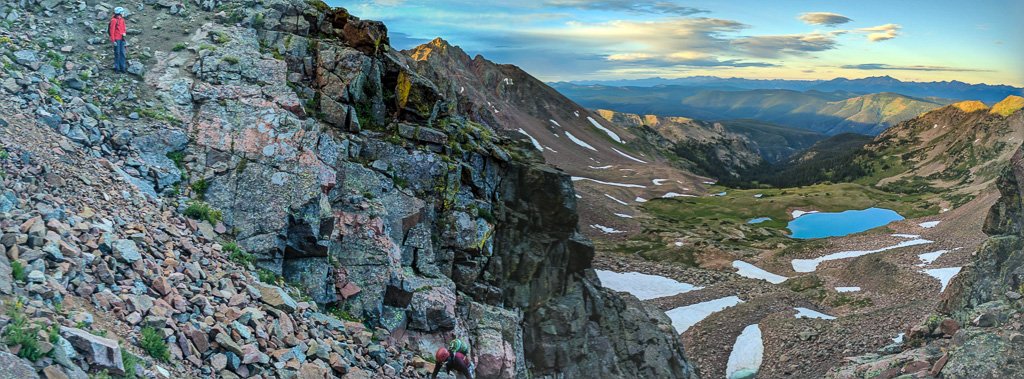
Your Trip Plan Should Include a Lot of “Whats”
In your trip plan spell out what you are doing. Are you biking, camping, then climbing a peak? Say so. Stating your activities helps clue in SAR to where you may be or what may have gone wrong. This also helps you start to think about what you are bringing. If you’re spending the night, including a description of your tent. Think about it, SAR may be able to find your camp, but not you.
One important aspect of search and rescue is understanding how prepared the victim (in this case you or a party member) is. Having a list of what you are bringing not only tells SAR how prepared you are, but it also helps you get organized.
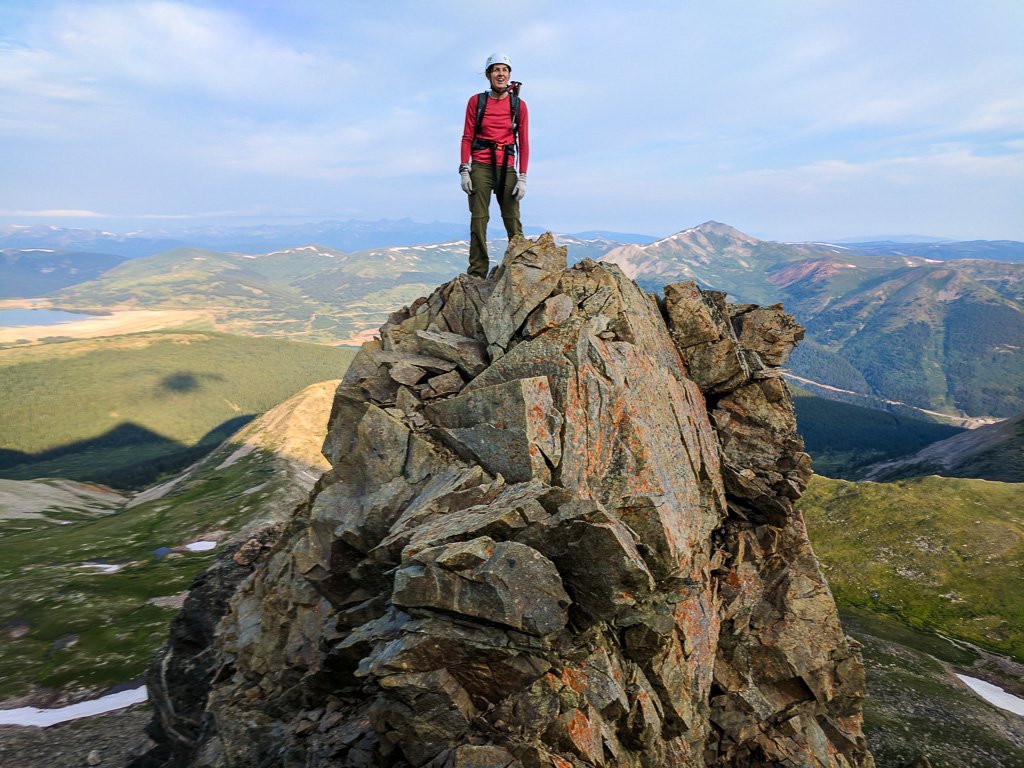
If you’re on a group trip, using Google Docs and having a gear list keeps everyone organized. Try sorting out individual and group gear. Make sure to note any special items you may need for your journey. If you’re out on a simple day hike, you probably don’t need an exhaustive list but do check that you have packed the 10 Essentials.
Another big “what” is weather and conditions. For winter journeys, be sure to include your avalanche conditions analysis. Note any special weather you may be concerned about such as storms, rain, or excessive heat.
Who Will be with You?
This is another big item a lot of people fail to include in their trip plan. Trip plans should include a description of each of the party members. Note any special medical needs and allergies. Another good idea is to note any clothing. You may have seen my bright red windbreaker. I wear this color specifically to be seen in an alpine environment. You bet that I’ll note it on my trip plan that I usually wear a bright red or blue jacket.
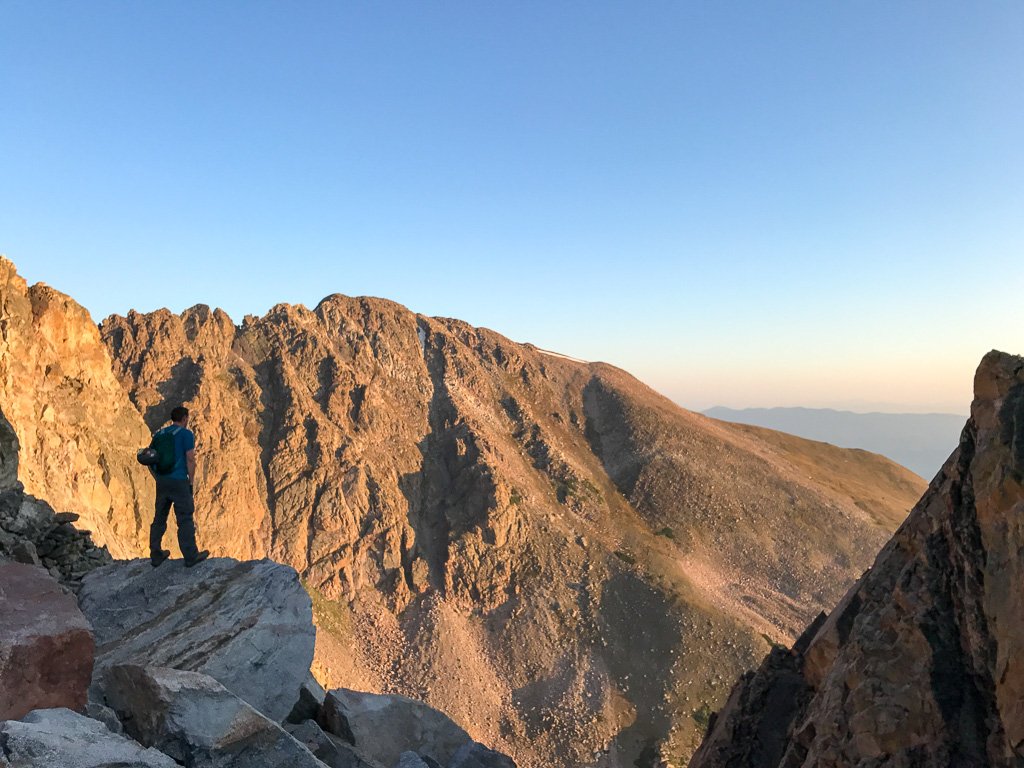
Who is the first person to call in the event of an emergency? The person you leave your trip plan with should have detailed instructions on what to do if you don’t make it back. In the case of Colorado, direct them to the sheriff’s office in the county you will be traveling in.
When are You Leaving and When Will You Be Back?
Each trip plan should have the details about when you are leaving and when you expect to be home. It’s ok if you can’t quite pinpoint the exact minute you’ll be back to the car. Give a timeframe such as I expect to be back early in the evening.
Leave Your Trip Plan with Someone at Home
All of that planning will be in vain unless you give your trip plan to someone. Some people may be a bit nervous with all the information. Simply tell them what area you are going to and when you expect to return. Ask them to reach out to you if they haven’t heard from you (sometimes it’s easy to forget after getting back from an epic adventure). If they still haven’t heard from you, give them a time at which they should call search and rescue.
Now that your trip plan is bomber-proof, you’re finally ready to get out there and have that kick-ass epic adventure. What else do you do to safely prepare for your outdoor adventures?
